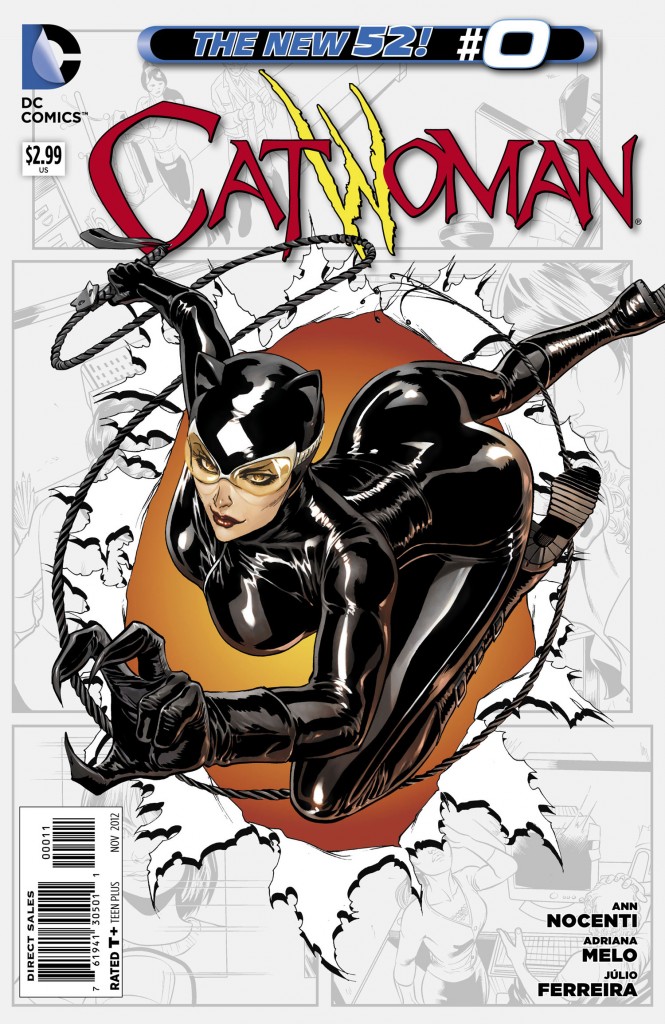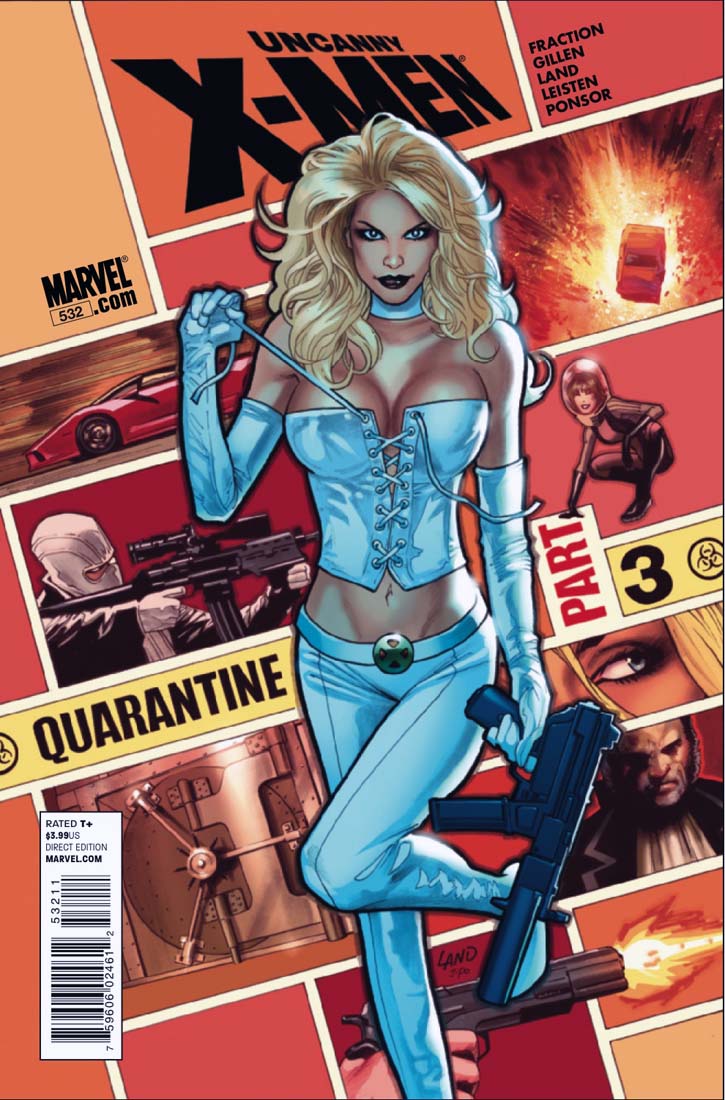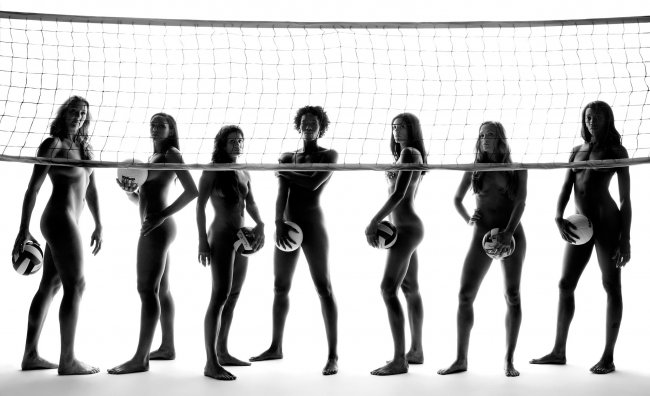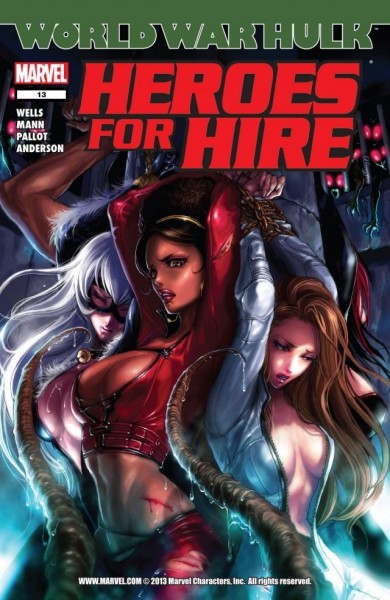Are Female Comic Characters Too Sexualized?
Lately, Marvel Comics has been trying to quell a mild controversy caused by a variant cover for the new
Spider-Woman series illustrated by Milo Manara. Manara’s cover prominently features Spider-Woman’s backside and has her positioned in a way that highlights her anatomy. A number of critics have complained that Spider-Woman was being sexualized. Marvel has
apologized, but it does raise the larger issue of whether female comic characters are generally too sexualized?

The comic book demographic is changing in both slow and rapid ways. There is now an undeniable large and devoted group of comic book readers who are woman. Of course, there have always been female comic readers, and comics have been courting female readers for many years (albeit rather badly), but it seems that within the past five years, female readership has grown rapidly. Marvel has responded to these changes by offering numerous new female-led series.
Spider-Woman will follow books like
Storm,
Black Widow,
Ms. Marvel as new series within the past six months.
So on one level, superhero comics seem to be responding to the trends in female readership, by offering more female-centered comics. However, Marvel Editor-in-Chief Axel Alonso also
comments to The Telegraph that “I don’t want to run away from sexy characters but I think there’s a difference between characters being sexy and gratuitous. It comes down to context. I won’t say we won’t do sexy female characters. That’s preposterous and ridiculous.” I think the balance is what's important. It would be rather ridiculous to offer a slate of female-led comic books only to populate them with sexualized characters with cheesecake art.

In some ways, I agree with Alonso. Each person’s perception of what is too much sexuality in a mainstream superhero comic book is liable to be different. There is nothing inherently wrong with a sexualized female comic character. However, it seems messed up if the
only sexualized characters are women. Batman does not flirt when trying to get information and while the physiques of male heroes are often highlighted, they are idolized rather than presented sexually.
Part of how sexualized a character is portrayed is related to the writing and part is related to the art. To a large extent, a writer can present a female character who is/is not powerful and complicated while also writing a story that has her attempt to overcome a challenge through some actions (perhaps even sexual ones). On the flip side, even a nuanced and deftly written female portrayal can be undermined if the artist is constantly posing and drawing the character as if she is a Playboy Playmate.

In my opinion, comic books have often had problems of both writing and artistic varieties when it comes to female character portrayals, but the artistic ones are more prevalent these days. The writing in comic books today is generally more complex and better crafted than in decades past. That has mostly extended to female comic characters (though there are still way fewer of them compared to male superheroes). However, there is a still a large contingent of comic book readers who like pin-up and/or cheesecake art and still a number of popular artist who like drawing in that style.
There is nothing wrong with some of that type of art style, but it would be nice if it came as part of a range of ways that female comic characters were drawn. It would also be nice if different body types of woman were shown. Certainly, the argument that superheroes should be athletic is valid, but that doesn’t mean that all will have small waists and huge boobs. Check out women’s sports to see a range of real athletic physiques.

One way for major companies like Marvel and DC to make these changes is to encourage strong female characterization (which is not the same thing as “idealized”) or to hire writers and artists who already do this. Another obvious way to make these changes is to hire more female writers and artists. There are enough talented women wanting to create comics that there isn’t a talent gap to prevent hiring more women. It’s one thing for comic books to have a more realistic percentage of female-led comics, but it’s also important for the industry to be more in line with the wider publishing/art/business world in terms of gender and hiring. It seems like they're trying, so hopefully the ratios will change in the future.

Once a varied visual representation of female comic characters is combined with a complexly-written version of the female character, then comics will have achieved some measure of accurate and strong representation of women. Some of those women will be sexual or wearing revealing costumes, and others will have plots with sexual elements interspersed with other types of plots. It’s not necessary to be “PC police,” as Alonso called it, to achieve these changes, just flexible and observant of what readers want. Comic companies always claim to want new readers – so now it’s time to show that’s not just empty talk.
 The comic book demographic is changing in both slow and rapid ways. There is now an undeniable large and devoted group of comic book readers who are woman. Of course, there have always been female comic readers, and comics have been courting female readers for many years (albeit rather badly), but it seems that within the past five years, female readership has grown rapidly. Marvel has responded to these changes by offering numerous new female-led series. Spider-Woman will follow books like Storm, Black Widow, Ms. Marvel as new series within the past six months.
So on one level, superhero comics seem to be responding to the trends in female readership, by offering more female-centered comics. However, Marvel Editor-in-Chief Axel Alonso also comments to The Telegraph that “I don’t want to run away from sexy characters but I think there’s a difference between characters being sexy and gratuitous. It comes down to context. I won’t say we won’t do sexy female characters. That’s preposterous and ridiculous.” I think the balance is what's important. It would be rather ridiculous to offer a slate of female-led comic books only to populate them with sexualized characters with cheesecake art.
The comic book demographic is changing in both slow and rapid ways. There is now an undeniable large and devoted group of comic book readers who are woman. Of course, there have always been female comic readers, and comics have been courting female readers for many years (albeit rather badly), but it seems that within the past five years, female readership has grown rapidly. Marvel has responded to these changes by offering numerous new female-led series. Spider-Woman will follow books like Storm, Black Widow, Ms. Marvel as new series within the past six months.
So on one level, superhero comics seem to be responding to the trends in female readership, by offering more female-centered comics. However, Marvel Editor-in-Chief Axel Alonso also comments to The Telegraph that “I don’t want to run away from sexy characters but I think there’s a difference between characters being sexy and gratuitous. It comes down to context. I won’t say we won’t do sexy female characters. That’s preposterous and ridiculous.” I think the balance is what's important. It would be rather ridiculous to offer a slate of female-led comic books only to populate them with sexualized characters with cheesecake art.
 In some ways, I agree with Alonso. Each person’s perception of what is too much sexuality in a mainstream superhero comic book is liable to be different. There is nothing inherently wrong with a sexualized female comic character. However, it seems messed up if the only sexualized characters are women. Batman does not flirt when trying to get information and while the physiques of male heroes are often highlighted, they are idolized rather than presented sexually.
Part of how sexualized a character is portrayed is related to the writing and part is related to the art. To a large extent, a writer can present a female character who is/is not powerful and complicated while also writing a story that has her attempt to overcome a challenge through some actions (perhaps even sexual ones). On the flip side, even a nuanced and deftly written female portrayal can be undermined if the artist is constantly posing and drawing the character as if she is a Playboy Playmate.
In some ways, I agree with Alonso. Each person’s perception of what is too much sexuality in a mainstream superhero comic book is liable to be different. There is nothing inherently wrong with a sexualized female comic character. However, it seems messed up if the only sexualized characters are women. Batman does not flirt when trying to get information and while the physiques of male heroes are often highlighted, they are idolized rather than presented sexually.
Part of how sexualized a character is portrayed is related to the writing and part is related to the art. To a large extent, a writer can present a female character who is/is not powerful and complicated while also writing a story that has her attempt to overcome a challenge through some actions (perhaps even sexual ones). On the flip side, even a nuanced and deftly written female portrayal can be undermined if the artist is constantly posing and drawing the character as if she is a Playboy Playmate.
 In my opinion, comic books have often had problems of both writing and artistic varieties when it comes to female character portrayals, but the artistic ones are more prevalent these days. The writing in comic books today is generally more complex and better crafted than in decades past. That has mostly extended to female comic characters (though there are still way fewer of them compared to male superheroes). However, there is a still a large contingent of comic book readers who like pin-up and/or cheesecake art and still a number of popular artist who like drawing in that style.
There is nothing wrong with some of that type of art style, but it would be nice if it came as part of a range of ways that female comic characters were drawn. It would also be nice if different body types of woman were shown. Certainly, the argument that superheroes should be athletic is valid, but that doesn’t mean that all will have small waists and huge boobs. Check out women’s sports to see a range of real athletic physiques.
In my opinion, comic books have often had problems of both writing and artistic varieties when it comes to female character portrayals, but the artistic ones are more prevalent these days. The writing in comic books today is generally more complex and better crafted than in decades past. That has mostly extended to female comic characters (though there are still way fewer of them compared to male superheroes). However, there is a still a large contingent of comic book readers who like pin-up and/or cheesecake art and still a number of popular artist who like drawing in that style.
There is nothing wrong with some of that type of art style, but it would be nice if it came as part of a range of ways that female comic characters were drawn. It would also be nice if different body types of woman were shown. Certainly, the argument that superheroes should be athletic is valid, but that doesn’t mean that all will have small waists and huge boobs. Check out women’s sports to see a range of real athletic physiques.
 One way for major companies like Marvel and DC to make these changes is to encourage strong female characterization (which is not the same thing as “idealized”) or to hire writers and artists who already do this. Another obvious way to make these changes is to hire more female writers and artists. There are enough talented women wanting to create comics that there isn’t a talent gap to prevent hiring more women. It’s one thing for comic books to have a more realistic percentage of female-led comics, but it’s also important for the industry to be more in line with the wider publishing/art/business world in terms of gender and hiring. It seems like they're trying, so hopefully the ratios will change in the future.
Once a varied visual representation of female comic characters is combined with a complexly-written version of the female character, then comics will have achieved some measure of accurate and strong representation of women. Some of those women will be sexual or wearing revealing costumes, and others will have plots with sexual elements interspersed with other types of plots. It’s not necessary to be “PC police,” as Alonso called it, to achieve these changes, just flexible and observant of what readers want. Comic companies always claim to want new readers – so now it’s time to show that’s not just empty talk.
One way for major companies like Marvel and DC to make these changes is to encourage strong female characterization (which is not the same thing as “idealized”) or to hire writers and artists who already do this. Another obvious way to make these changes is to hire more female writers and artists. There are enough talented women wanting to create comics that there isn’t a talent gap to prevent hiring more women. It’s one thing for comic books to have a more realistic percentage of female-led comics, but it’s also important for the industry to be more in line with the wider publishing/art/business world in terms of gender and hiring. It seems like they're trying, so hopefully the ratios will change in the future.
Once a varied visual representation of female comic characters is combined with a complexly-written version of the female character, then comics will have achieved some measure of accurate and strong representation of women. Some of those women will be sexual or wearing revealing costumes, and others will have plots with sexual elements interspersed with other types of plots. It’s not necessary to be “PC police,” as Alonso called it, to achieve these changes, just flexible and observant of what readers want. Comic companies always claim to want new readers – so now it’s time to show that’s not just empty talk.